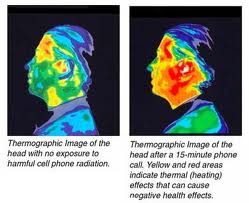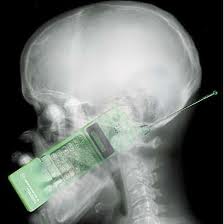By Pepper Parr with content from CNET
In the late 1950s and early 1960s, more than 10,000 children in 46 countries were born with deformities as a consequence of thalidomide use. Thalidomide was sold in a number of countries 1957 until 1961 when it was withdrawn from the market after being found to be a cause of birth defects in what has been called “one of the biggest medical tragedies of modern times”.
Medical science has done a lot for us.. Penicillin, the polio vaccine, heart transplants – the list is endless but mistakes get made and we do need to be mindful and pay attention to the technology. Ask questions now because in the past we rushed to get a new medicine and new products to market. Have we done that with cell phones?
Thalidomide was introduced as a sedative drug and was found to act as an effective tranquilizer and painkiller and was proclaimed a “wonder drug” for insomnia, coughs, colds and headaches. It was also found to be an effective inhibitor on morning sickness, and so thousands of pregnant women took the drug to relieve their symptoms.
In the United Kingdom the drug was licensed in 1958 and, of the approximately 2000 babies born with defects, 466 survived. The drug was withdrawn in 1961 and in 1968, after a long campaign by The Sunday Times newspaper, a compensation settlement for the UK victims was reached with Distillers Company Limited.

The impact in the United States was minimized when pharmacologist and M.D. Frances Oldham Kelsey refused Food and Drug Administration (FDA) approval. Canada was the last country to stop the sales of the drug, in early 1962.
We tell you all this because there “might”, and that might needs to be stressed, be a link between that terrible thalidomide experience and the ubiquitous use of cell phones. This is not meant to be alarmist – but questions can and should be asked.
Research ‘suggests’ that cell phone use “excites” the brain.
We picked up the following from Kent German writing for CNET; lhttps://www.cnet.com/
Here are his comments and observations:
[box type=info]If you cover the wireless industry, you’re never far from the ongoing debate over whether cell phones are harmful. And the debate usually goes something like this: the scientific community produces a study that explores the issue, and then the wireless industry rushes to interpret that study to its advantage.
Such was the case with a report published yesterday in the Journal of the American Medical Association. Researchers at the National Institutes of Health found that in healthy volunteer participants, cell phone exposure was associated with increased metabolism of glucose in the region of the brain closest to the antenna. So as CNET blogger Lance Whitney put it, the study suggested that cell phone use “excites” the brain.
Whether that increased brain activity is harmful, however, remains to be seen. The study’s authors also concluded that their findings were of “unknown clinical significance” and that more research is needed. And, not surprisingly, the Cellular Telecommunications Industry Association (CTIA), the wireless industry’s lobbying arm in Washington, D.C., highlighted the former point in a statement.
“The authors acknowledge that the results provide no information as to potential health effects of cell phones,” the statement said. “As with any study, scientific organizations will review the results of this one in the context of the significant body of research and published literature on cell phone safety that has already been amassed.”
What’s really important
So, as I said, the scientific community reports a study and the wireless industry takes the study and highlights the points that it likes the best. Yes, that’s much how the debate between science and industry has largely progressed throughout history, but it bothers me that in the process, consumers get only the information that organizations like the CTIA want them to hear.

Absolutely, CTIA is correct to highlight that the study makes no conclusions as to whether cell phones are harmful. Yet, dwelling on that point misses the most significant aspect of the study, which is that cell phone use can affect how your brain functions, even temporarily. Proving that point alone–and I realize that this one study doesn’t “prove” anything, but it does demonstrate it–has been the focus of much of the previous research over whether cell phones were potentially harmful. Lots of other things also affect the brain–food, sex, alcohol, drugs, to name a few–but not everything pumps out electromagnetic radiation next to your brain.
Dr. Devra Davis–an epidemiologist, environmental health researcher, and founder of Environmental Health Trust–characterizes the finding as stunning. “This demonstrates that cell phone use affects brain activity,” she told CNET. “The study used real people and was as close as you can get to a biopsy on a living brain.”
Davis, who authored the 2010 book “Disconnect: The Truth about Cell Phone Radiation, What the Industry Has Done to Hide it and How to Protect Your Family,” also cautioned against making firm conclusions from the study, but she takes a forceful role in advocating for more research. “The notion that we have enough information is completely wrong,” she said.
More research
As other, and usually inconclusive, studies continue to be published, I would be skeptical of anyone arguing that the case should be closed. Even the CTIA has argued for more research, and a spokeswoman confirmed that point with me today. Yet, I see a gap between the industry group’s actions and its vow to take the issues seriously.
For example, when the San Francisco Board of Supervisors passed a law last year requiring cell phone manufacturers to display the specific absorption rate (SAR) for each handset sold, the CTIA effectively stopped playing, took its ball, and went home. Not only did it blast San Francisco in a statement, but it also decided to move its autumn trade show to San Diego to punish the city.
Some standards
I’m not a staunch defender of San Francisco’s law–indeed, there’s plenty about my city’s government that makes me roll my eyes–but the CTIA’s reaction suggested that the “are they harmful/not harmful?” debate wasn’t worth its time. Yes, there’s no proof that a lower-radiation cell phone is safer. And, yes, information about a phone’s specific absorption rate (SAR) is widely available. Yet, as long as San Francisco is not making scientific claims about cell phone use, I don’t see the problem in giving consumers information and making it available when they buy the phone.
The CTIA mainly argued that San Francisco didn’t have the authority for such legislation. That’s possible, but as with most things, it’s never about what it’s about. As it has done in response to almost every study (including the one above) the industry also fell back on the notion that all cell phones sold in the United States are safe because they conform to FCC standards for safety (a SAR of 1.6 watts per kilogram or lower is legally considered “safe”). This is unfortunate. What most consumers don’t know is that the FCC’s standards were developed in 1993 using a model of a human who was 6 feet 2 inches tall, weighed 200 pounds, and had an 11-pound head. That’s hardly a fair representation of the average adult, let alone a child (remember, also, that kids have thinner skulls and their brains are still developing). What’s more, the digital phones we use today weren’t around 18 years ago. So maybe I’m a pessimist, but perhaps we should take a look at developing new standards.
I’m not a scientist, so I’m not about to interpret the findings of this or any study. But if cell phone use can really affect brain activity, then we are nowhere near laying this argument to rest. Though much of my job is devoted to helping CNET readers find the best phone, neither CNET nor I has any interest in putting our heads in the sand and guaranteeing you that cell phones are safe. To do so would be irresponsible.
Until we can determine if cell phone use can adversely affect your health through DNA mutation–and frankly, we may not be able to determine that for many years, if we ever can at all–the industry needs to take the issue seriously. Blowing off concerned parties, alarmist as they may be, doesn’t help the situation. Nor does it help to continually point to government reports and convenient studies that find that nothing is wrong.
[/box]
The same thing happened with the thalidomide debate – but the terrible results could not be ignored. Not to be alarmist – but could someone spend some time and money on this issue – it is not exactly a “no-brainer”.
[retweet]





















